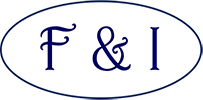Report from the Annual Course Jumping Report
Addington is a venue I have not been to for many years. I remember being pretty impressed all those years ago. It didn’t disappoint this time, simple and smart new navy branding, many arenas and good signage greeted us as we arrived.
Ann was on the door smiling as always. I never know how she manages to do this when she has the weight of such an extensive two days on her shoulders.
Beyond the entrance doors, two fabulous indoor schools. To the right the amazing Gareth Hughes delivering his expertise to those that wish to perfect their dressage, and to the left Richard Waygood for those who wish to seek adrenalin in the form of “dressage with jumps“.
Richard’s tones drew us in to watch him at work. His straightforward approach was refreshing and easy to follow. Balance – Line – Correct Way of Going.
He encouraged riders to “do their dressage“ on a regular basis, making use of shoulder-in on the circle, leg-yields and numerous dressage moves to aid suppleness and to activate the hind leg.
Riders were asked to vary their horses’ canter strides to enable adjustability with impulsion. “Impulsion gives you options“ and “it’s all about the paces within the canter“.
He placed two planks on the floor, five regular strides apart, and riders were asked to ride down on five canter strides and then to adjust to six. He quickly assessed the strengths and weakness in horse and rider. His positive approach with minor adjustments showed significant improvements in all riders and horses.
He used poles to improve turns and balance. Canter placement poles, on a curving line to an angled raised pole, were used to begin the jumping.
He had two of these, one on each side of the 25m circle. This helped riders develop straightness over the fence and remain central. The use of dressage between each jumping effort was insisted upon. Again his simple approach was very much that we have to think of jumping as dressage with jumps. The better our flat work the better our jumping. He was insistent that it was not to be forgotten, before and after each and every fence.
He was quick to point out any lack of straightness and he wanted the same focus on departure as approach.
Three square oxers two strides apart were used to develop horse athleticism and dexterity as well as get the riders finding the correct canter rhythm. Dressage before and after the exercise was always required. Minor rider adjustments made major improvements, showing his good eye for detail.
Being lucky enough to ride in one of his sessions I can vouch for his ability to improve horse and rider – and I came out of my session more confident, and very humbled by the speed at which he found the chink in my armour and how seamlessly he ironed the chink out.
I myself and I am sure many others would be lying if we said we were not a little disappointed to find that he was unable to return for the second day, due to having put his back out.
The amazing group of people that is the F&I Association rallied to the rescue and we had what can only be described as a selection box of coaching master classes, with many of the Fellows of our Association stepping into the fray! No mean feat for any of them to follow in the footsteps of such a super first day.
Our chair Sam York started the morning. Attention to detail and sneaky lines were her take aways as she progressed all riders forwards with the infectious enthusiasm and encouragement for which she is so well known.
Kylie Roddy stepped up to take the next sessions, showing an almost perfect master class of modern coaching. Calm organised sessions with good audience and rider participation. Probably the most consistent at following Richard’s start, she seemed to make the logical progression from the first day’s gymnastic exercises and take them into jumping course lines, maintaining that impulsive canter. She used the two-circle warm up plan around four different jumps – the first to find the way, and the second circle to find the balance.
The lovely Eric Smiley was up next. We heard him encourage riders to “make the canter more ambitious“. He used poles to “help the event horse make his own decision where to put his feet” and he encouraged riders to use the half-halt or momentary pause to check their aids and re-engage the pace.
The day concluded with Jayne Smart showing her expertise as a show jump coach. Related distances and curving lines were the focus of her sessions, including helping riders to understand their own individual horses and how they should deal with distances as a partnership.
Fascinatingly, the fences all remained in the same place, but each coach used them differently. If you didn’t go away from today with more ideas to use in your own jump coaching I can only assume you turned right when you came in the entrance door and not left!
How lucky we are to have such a positive membership that within our fold we can muster up four additional coaches of such calibre within moments of our star of the show falling by the wayside. And how lucky are we that we got to see such a master class of different coaching styles and techniques all within one day.
What a fantastic two days. Thank you F&I!
Report written by Lisa Spence and notes provided by Rachel Lee
